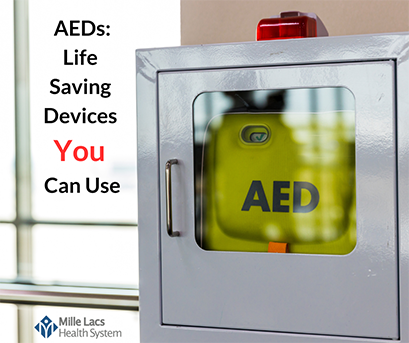AEDs: Life-Saving Devices You Can Use
October 2, 2024
Automated External Defibrillators (AEDs) are an essential part of public safety, they can often be found in schools, businesses, community centers, churches, public spaces, and are carried by many first responders. Beyond knowing they exist, it’s important to know when to use them, and how to use them.
An AED is a portable device that can be a lifesaver during a cardiac emergency. Designed to treat sudden cardiac arrest (SCA), an AED analyzes the heart’s rhythm and, if necessary, delivers an electric shock to help restore a normal heartbeat. AEDs are user-friendly and designed so that even individuals with no medical training can operate them effectively. According to the American Heart Association, for every minute that defibrillation is delayed, the chances of survival decrease by nearly 10%.
AEDs are designed to be incredibly safe and user-friendly. The device provides voice prompts and visual cues to guide you through the process. Modern AEDs are built with fail-safes—they won’t deliver a shock unless the device detects an abnormal heart rhythm that requires defibrillation.
If you witness someone collapse or become unresponsive, call 911 and begin CPR while you retrieve an AED. Here are the basic steps for using an AED:
- Turn on the AED and follow the visual and audio prompts.
- Attach the pads to the person’s chest as directed on the device. AEDs will show where to place the pads.
- Stand clear while the AED analyzes the heart rhythm.
- If a shock is needed, the AED will prompt you to press the button to deliver the shock.
- Continue CPR as needed until emergency help arrives.
According to the American Red Cross, AEDs are safe to use on adults, children, and infants, though pediatric pads should be used for children under eight years old if available.
Studies show that early defibrillation, when combined with CPR, can more than double the chances of survival.
AEDs are vital, life-saving devices that are safe and easy for anyone to use in an emergency. With cardiac arrest being one of the leading causes of death, ensuring that AEDs are available in public places and that community members know how to use them is essential. By understanding the basics of these devices and their role in emergency situations, we can create a safer and more prepared community. Keep your eyes peeled for where AEDs are located in your community.
